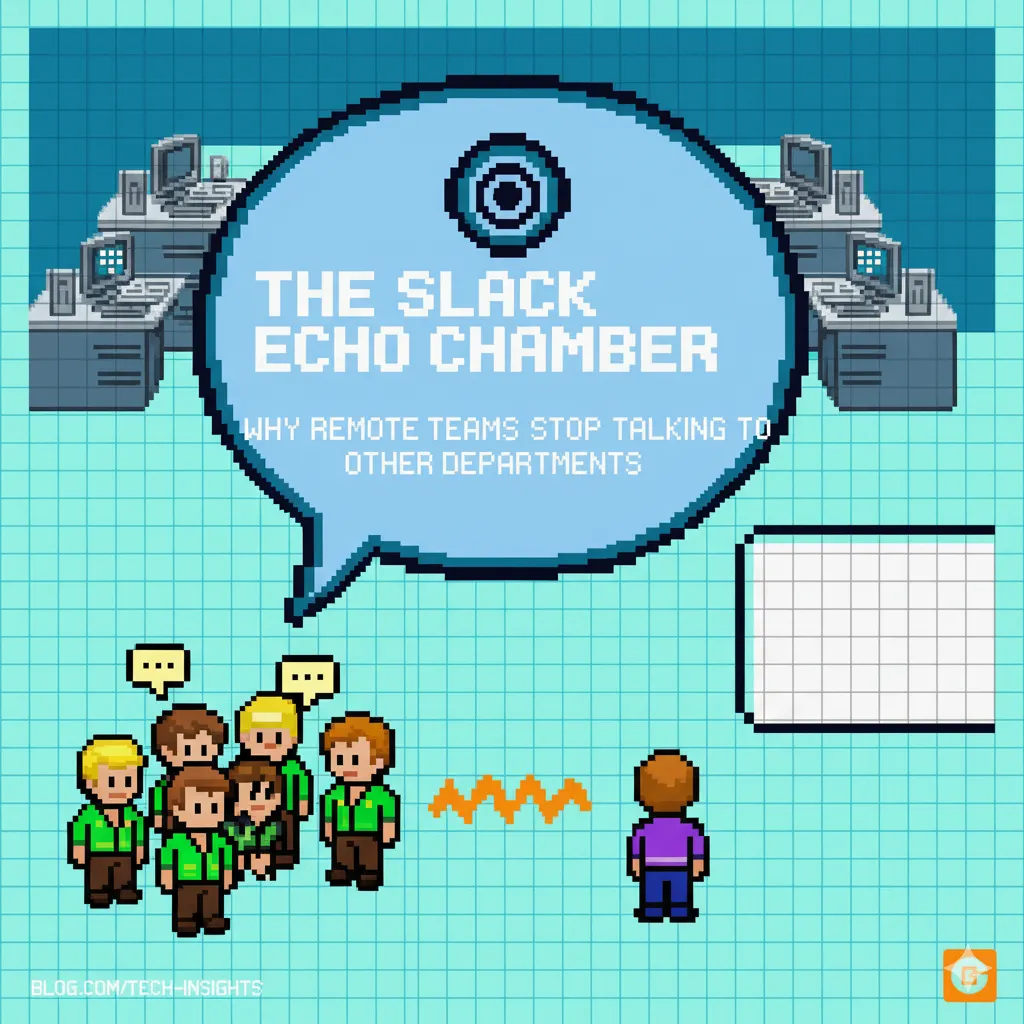The Slack Echo Chamber: Why Remote Teams Stop Talking to Other Departments
Marketing has 47 active channels. Sales has 23. Engineering runs 31. But when did marketing last talk to sales outside of the monthly all-hands?

The channel clustering effect
Teams naturally organize around their daily work. Marketing creates #campaigns, #content, #analytics. Engineering builds #frontend, #backend, #devops. Sales runs #prospects, #deals, #outreach.
Makes perfect sense. Until you realize each department is having conversations the others would benefit from hearing.
Marketing discusses customer pain points that engineering could solve. Engineering debates features that sales could position better. Sales learns client objections that marketing could address in messaging.
But the conversations happen in separate spaces, with separate people, creating separate realities.
Why cross-team channels fail
Someone creates #marketing-engineering to bridge the gap. Day one: enthusiastic participation. Week two: crickets. Month three: the channel becomes a graveyard of good intentions.
Cross-functional channels fight human nature. People communicate where their daily work happens, not where org charts suggest they should communicate. The coordination overhead of maintaining artificial bridges outweighs the benefit.
#general becomes the only shared space, which means it becomes a dumping ground for announcements nobody reads.
The remote amplification
In-office teams cross-pollinate accidentally. Coffee line conversations, lunch table mixing, hallway encounters. Remote work eliminated these unstructured interactions without replacing them.
Slack promised to recreate that ambient awareness digitally. Instead, it formalized communication into departmental silos. You only see what you're explicitly included in.
The serendipitous knowledge transfer that drives innovation? Gone.
What gets siloed
Customer insights stay trapped in sales channels. Technical constraints remain hidden in engineering discussions. Market shifts get discussed only in marketing spaces. Financial pressures live in executive threads.
Each team optimizes for their local information while missing the global context that would change their decisions. Strategy fragments because the strategy conversation is actually five separate conversations.
The knowledge asymmetry problem
Sales knows why deals are stalling but engineering doesn't hear it. Engineering knows why features are delayed but marketing can't plan around it. Marketing understands competitive positioning but sales uses outdated messaging.
Information asymmetry creates misaligned teams. Everyone's working hard in different directions because they're operating from different information sets.
Beyond forced interaction
The solution isn't more cross-functional meetings or mandatory channel participation. It's making relevant information surface across departmental boundaries automatically.
When sales discusses a client's technical concern, engineering should see it without joining every sales channel. When engineering debates a feature timeline, marketing should know without monitoring development discussions.
Context should flow to relevance, not department structure.
What intelligent cross-pollination looks like
Sales mentions a client requesting better API documentation. Engineering sees the feedback automatically and realizes it's the third similar request this month. Documentation gets prioritized.
Engineering discusses performance improvements in the new feature. Marketing receives a summary and updates the positioning to highlight speed. Sales gets talking points that actually match what the product delivers.
Marketing analyzes competitor pricing strategies. Sales and product teams get insights relevant to their upcoming decisions without wading through marketing-specific discussions.
The network effect
When information flows across departments intelligently, everyone makes better decisions. Sales sells what engineering builds. Engineering builds what customers need. Marketing messages what the product actually does.
Teams stay aligned not through forced coordination but through shared context.
Beyond the department trap
The goal isn't eliminating departmental focus — it's preventing departmental blindness. Teams need deep expertise and shared awareness.
When everyone operates from the same information baseline, collaboration becomes natural instead of forced.
For teams ready to break down information silos without breaking down necessary structure, Float AI automatically surfaces relevant cross-departmental insights without requiring anyone to monitor channels outside their daily work.